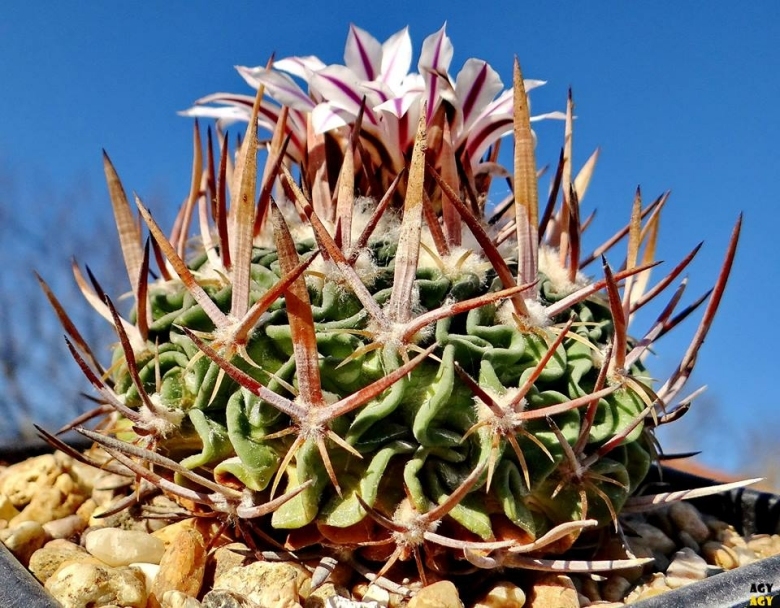Accepted Scientific Name: Stenocactus phyllacanthus
Kakteen (Berger) 346. 1929

Stenocactus phyllacanthus var. violaciflorus Photo by: Agócs György
Field number SB107 (Collector Steven Brack) Locality: Salinas, San Luis Potosi, Mexico. (Notes: = E. crispatus & E. pentacanthus previous lists)
Origin and Habitat: Querétaro, San Luis Potosí, Zacatecas.
Synonyms:
See all synonyms of Stenocactus phyllacanthus
back
Accepted name in llifle Database:Stenocactus phyllacanthus (A.Dietr. & Otto) A.BergerKakteen (Berger) 346. 1929Synonymy: 14
back
Description: Stenocactus phyllacanthus var. violaciflorus (Echinofossulocactus phyllacanthusSN|911]]SN|911]] v. violaciflorus) is a controversial variety now referred to Stenocactus phyllacanthusSN|3443]]SN|906]], but also referred to Stenocactus crispatusSN|906]]SN|3443]] and Stenocactus pentacanthus. There is a general lack of understanding on the taxonomic position of the species within the genus and thus is it no possible to define either the spatial or systematic limits of the taxon. The var. violaciflorus mainly distinguishes for the flowers that are slightly larger, more numerous with creamy white petals with pink violet midstripe (not yellow). Whatever they are called they are all lovely plants meriting a place in any succulent collection.
Subspecies, varieties, forms and cultivars of plants belonging to the Stenocactus phyllacanthus group
Cultivation and Propagation: Easy to to care and flower. No absolute schedule can be given for watering as various factors (Soil mixture, containers, drainage, temperature, size of plant) influence water use, so - as a general rule - the soil should be thoroughly wetted at each watering during the active growing season (spring and summer), water when the top 1,5- 2 cm of soil feels dry to the finger. Do not soak the soil during the dormant period. Be careful, excessive watering can make root and/or stem to rots. Make sure there is good air circulation between plants. Good drainage is essential along good moisture retention properties and adequate nutrients availability. Require bright sunlight to grow well. Dormant plants do best at temperatures from 5-10°C (but will tolerate -5° for short periods). The cooler temperatures develop sturdier plants and encourage the formation of flower buds.
Pests: The narrow ribs, the wooly areoles, and the dense spines are an ideal habitat for mealy bugs. Frequent inspection of the plants will prevent them from spreading.
More...











